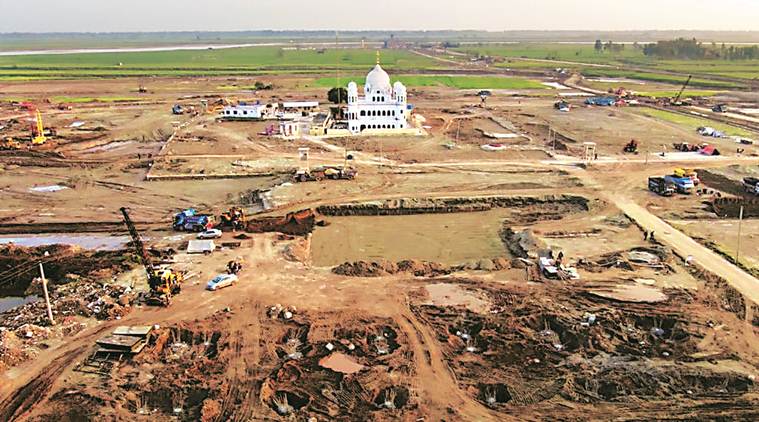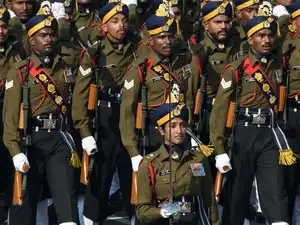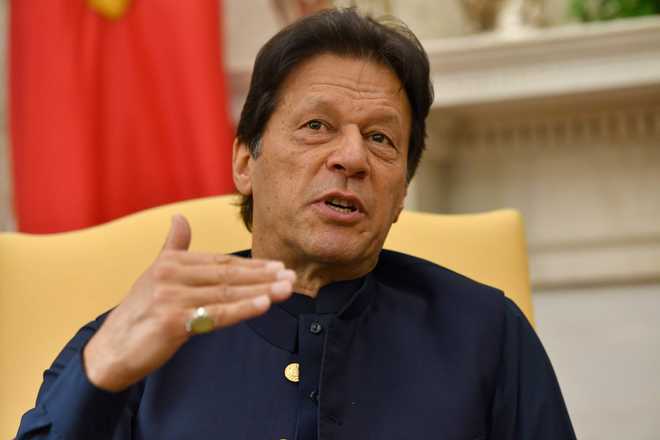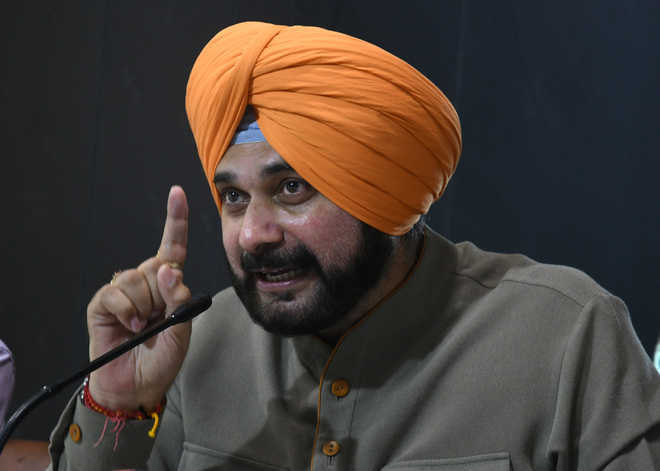
The letter Navjot Singh Sidhu wrote on November 7.
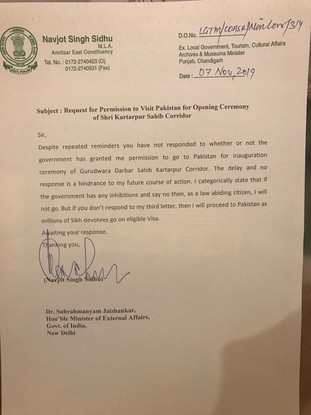
The letter Navjot Singh Sidhu wrote on November 6.
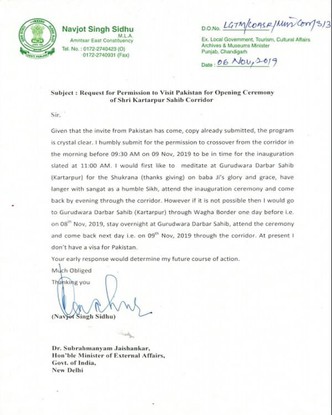
Sandeep Dikshit & Ruchika M Khanna
Tribune News Service
New Delhi/Chandigarh/Islamabad, November 7
Hours after Punjab Congress leader Navjot Singh Sidhu was given political clearance by the Centre on Thursday to take part in the Kartarpur corridor inauguration ceremony on the other side of the border, Pakistan issued him visa.
Political clearance has been granted to Sidhu to travel through the Kartarpur Sahib corridor on November 9, the sources in New Delhi said.
The Pakistan government invited Punjab Congress leader Sidhu — who also attended the groundbreaking ceremony of the Kartarpur Corridor — to attend Saturday’s inauguration.
A ruling party spokesperson had said that Sidhu, a personal friend of Pakistan Prime Minister Imran Khan since old cricketing days, accepted the invitation.
“Sidhu has been issued a visa and we will warmly welcome him on the opening ceremony,” Foreign Office spokesperson Mohammad Faisal said during his weekly media briefing here.
The passport waiver for Kartarpur pilgrims would extend up to one year as a special gesture on the 550th birth anniversary of Guru Nanak Dev, Faisal said.
Pakistan has also waived the USD 20 service charge per pilgrim per visit on November 9 and November 12, he said, adding that it has also waived the requirement of 10-day advance intimation for the mega ceremony.
He said he would go to Pakistan as millions of devotees go on an eligible visa. He said since he has not got any response from the EAM, in spite of repeated reminders seeking permission, he would still go to Kartarpur.
Sidhu had on Wednesday also sought permission from the Centre for his clearance to visit Kartarpur. He had said he would visit Kartarpur via Wagah, if the approval to travel on Pakistan PM Imran Khan’s invite to him was not granted.
Sidhu has already missed the opportunity to be part of the official jatha. All Punjab MLAs were asked to apply, but Sidhu opted out. — With PTI inputs
Sidhu’s role can’t be overlooked, admit Cong leaders
Ruchika M Khanna
Tribune News Service
Chandigarh, November 6
Nearly four months after his unceremonious exit from the Cabinet and attempts to push him to political oblivion, Navjot Singh Sidhu found support and praise from some of his “old friends” in the party.Cooperatives Minister Sukhjinder Singh Randhawa and MLA Pargat Singh came out openly in support of Sidhu, while PPCC chief Sunil Jakhar was subdued while giving him credit for the opening of the corridor. Even as some senior Congress ministers and leaders raked up the issue of Sidhu’s stand of not participating in the special commemorative session of the Vidhan Sabha and seeking permission to go to Pakistan, the leaders spoke of his “contribution” in getting the project through.
CM Capt Amarinder Singh has so far refused to give credit to Sidhu. In fact, the rift between the CM and Sidhu began after the latter went to Pakistan to attend the swearing-in ceremony of Pakistan PM Imran Khan, where Sidhu had claimed that Pakistan Army General Qamar Javed Bajwa had reportedly told him of the government proposal to construct the corridor. Sidhu was not present in the House today, and his name or his role over the matter was not mentioned during the session.
Randhawa told The Tribune that he gave credit to Sidhu for the construction of the corridor. “I, however, regret that Sidhu did not attend the session today. I would have loved to take him (Sidhu) along as part of the jatha to Kartarpur, and together we would have thanked Pak PM Imran Khan for fulfilling this long-pending demand of the Sikhs,” he said.
MLA Pargat Singh, who is among the few MLAs believed to be close to Sidhu, said the corridor was possible only because Guru Nanak had so desired. “But Sidhu and Imran Khan have played an important role. I would thank them and anyone else who has played a role in this,” he said. Even Jakhar said the contribution by Sidhu could not be ignored in getting the project through. “He played his part. But it is Baba Nanak who alone should get credit for the corridor,” he was quick to add.





















































